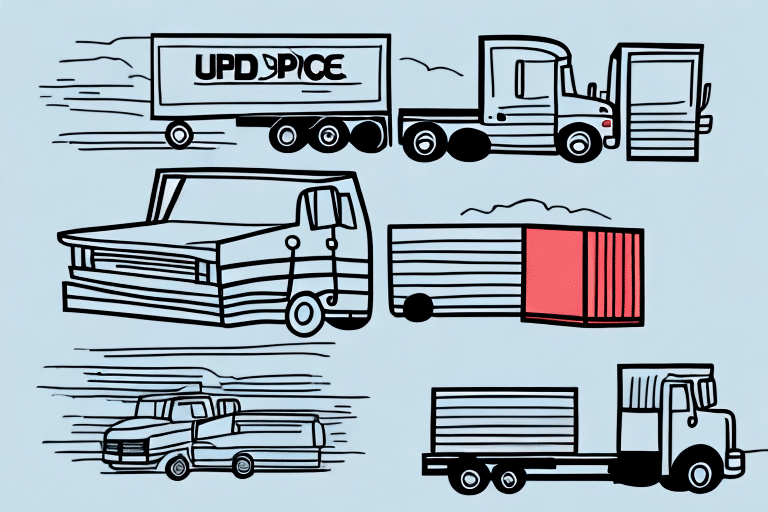Overview of USPS and UPS
When selecting a shipping service, understanding the fundamental differences between USPS (United States Postal Service) and UPS (United Parcel Service) is crucial. Established in 1775, USPS operates as an independent agency of the U.S. federal government, providing mail and package delivery services across the nation. In contrast, UPS, founded in 1907, is a global private corporation renowned for its extensive logistics and delivery solutions.
While USPS primarily serves individual consumers with options like First-Class Mail and Priority Mail, UPS focuses more on business-to-business shipping, offering advanced logistics, supply chain management, and specialized delivery services.
Shipping Rates and Pricing Structures
Shipping costs are a pivotal consideration when choosing between USPS and UPS. Generally, USPS offers more competitive rates for smaller packages and lightweight shipments. For example, USPS First-Class Mail starts at $0.58 for items under 1 ounce, making it ideal for letters and small parcels.
On the other hand, UPS tends to be more cost-effective for larger and heavier packages. For instance, UPS Ground rates for packages over 70 pounds may be lower compared to USPS Ground services.
- USPS Pricing: Utilizes a flat-rate pricing model for various services, simplifying cost estimation for standard shipments.
- UPS Pricing: Employs a variable pricing structure based on package weight, dimensions, and destination, offering tailored solutions for businesses.
It's essential to analyze your shipping needs and compare rates accordingly. Online tools like the USPS Rate Calculator and the UPS Rate Estimator can aid in determining the most cost-effective option.
Shipping Services and Options
Both USPS and UPS offer a diverse array of shipping services tailored to different needs:
Domestic Shipping Services
- USPS: Services include First-Class Mail, Priority Mail, Priority Mail Express, and Media Mail. Priority Mail offers 1-3 day delivery with flat-rate boxes, suitable for most standard shipments.
- UPS: Offers Ground, 3 Day Select, 2nd Day Air, and Next Day Air services. UPS Next Day Air is ideal for urgent deliveries, ensuring next-business-day delivery by specific times.
For example, UPS Next Day Air provides expedited shipping for time-sensitive packages.
International Shipping Services
- USPS: Provides services like Global Express Guaranteed, Priority Mail International, and First-Class Package International Service, offering affordable options with varying delivery speeds.
- UPS: Offers Worldwide Express, Worldwide Saver, and Worldwide Expedited, known for reliable delivery times and comprehensive tracking globally.
According to the 2023 UPS annual report, UPS handles over 18 million packages daily worldwide, underscoring its extensive international presence.
Specialized Services
- USPS: Limited specialized services, focusing mainly on standard and express mail.
- UPS: Comprehensive specialized services including freight shipping, temperature-controlled shipping, and handling hazardous materials.
Tracking, Delivery, and Timeframes
Effective tracking and reliable delivery are vital for both individuals and businesses. UPS generally provides more detailed and real-time tracking compared to USPS. With UPS, users can track packages every step of the way through their Tracking System, which updates in real-time.
USPS also offers tracking services, especially for Priority Mail and Express Mail, but the granularity and update frequency may not be as robust as UPS.
Delivery Speed
UPS typically offers faster delivery options, particularly for long-distance and international shipments, leveraging its global network to ensure timely deliveries. USPS excels in same-state or local deliveries with services like Priority Mail Express.
According to the U.S. Postal Service Performance Statistics (2023), USPS delivers 95% of Priority Mail packages within 3 business days, while UPS guarantees next-day delivery for select services like Next Day Air.
Customer Support and User Experience
Reliable customer support significantly enhances the shipping experience. UPS is renowned for its high-quality customer service, offering support through phone, email, and live chat, with representatives known for their expertise and responsiveness.
USPS also provides customer support via phone and online inquiries, but feedback indicates that UPS may offer more accessible and efficient support options.
User Reviews and Ratings
Customer satisfaction ratings often favor UPS for its reliability and service quality. According to Trustpilot, UPS maintains a higher average rating compared to USPS, reflecting better user experiences in terms of promptness and customer service.
Additional Features and Sustainability
Shipping Insurance and Security
Both carriers offer shipping insurance, but UPS provides more comprehensive coverage options. UPS offers insurance up to $50,000 for high-value items, while USPS typically offers insurance up to $5,000.
Packaging Materials
USPS provides a selection of free packaging materials, including boxes and envelopes that are cost-effective for small businesses and individual shippers. UPS offers a broader range of packaging options, including specialized boxes and padded mailers, suited for various shipping needs.
Environmental Impact
Both USPS and UPS have implemented sustainability initiatives to reduce their carbon footprint. USPS has been investing in electric and hybrid vehicles to enhance energy efficiency, while UPS has expanded its fleet of alternative fuel vehicles and set ambitious goals to reduce greenhouse gas emissions by 2050. According to the UPS 2023 Sustainability Report, the company aims to achieve carbon neutrality by 2050.
Conclusion: Choosing the Right Carrier
Deciding between USPS and UPS hinges on your specific shipping requirements. For smaller, lightweight packages and cost-effective solutions, USPS is often the preferred choice. Conversely, for larger shipments, expedited delivery, and comprehensive tracking, UPS stands out as the superior option.
Before making a decision, evaluate factors such as package size, weight, delivery timeframe, budget, and the necessity of specialized services. Utilizing tools like the USPS and UPS rate calculators can further aid in making an informed choice tailored to your shipping needs.






















